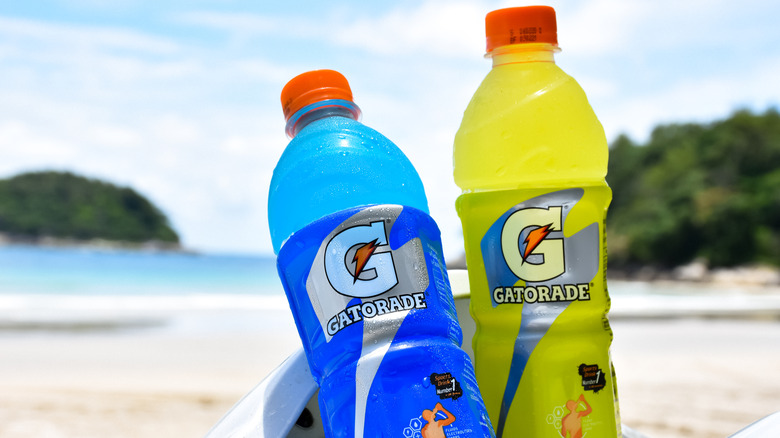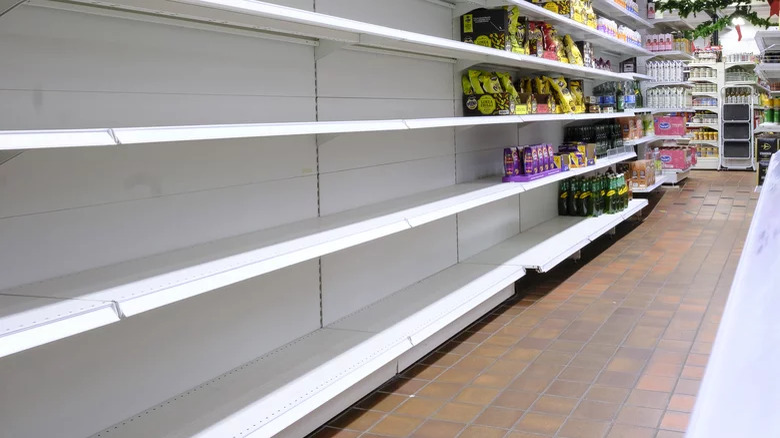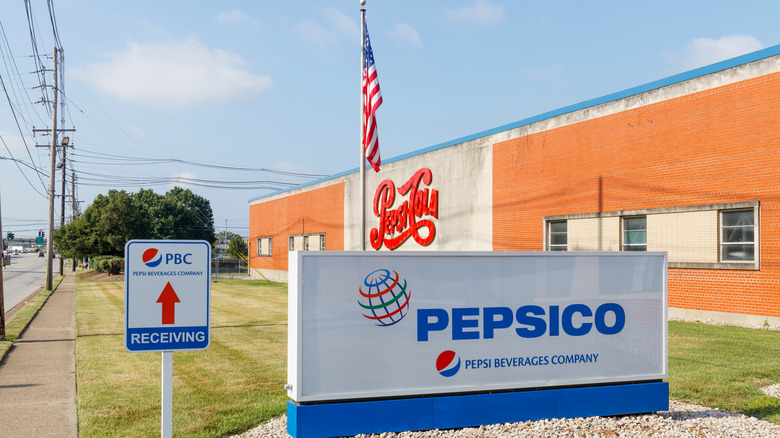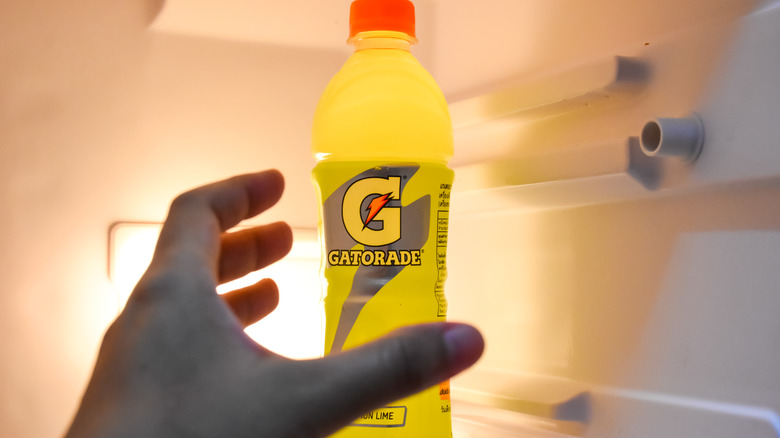What You Need To Know About 2021's Gatorade Shortage
While the United States has become known as a land of excess (via Dyersville Commercial), it has had to deal with quite a few shortages over the years, from the wheat shortage of the early 18th century to food rationing during World War II to the gas crisis of the 1970s (via Saturday Evening Post). But the "shortage culture" that has developed as a result of the ongoing COVID-19 pandemic is like nothing ever before seen in this country. Although it began with panic-buying at the pandemic's onset, the empty-shelf phenomenon has blossomed like never before over the last year and a half thanks to complicated supply chain issues, including worker shortages and a lack of materials.
In late August, the Wall Street Journal reported that new problems were arising weekly, with an ever-widening range of products becoming scarce, particularly in the food and beverage industry, where players "anticipate disruptions lasting into 2022." While some of those disruptions might seem rather "niche," none is insignificant because each has something to teach us about the complex dynamics of supply and demand. Take for example the Gatorade shortage (via Colorado's KRDO News Channel 13).
The pandemic played an important role in 2021's food and drink shortages
When did the shortages begin? At the start of the pandemic, in March 2020, Americans raced to stock up on toilet paper, flour, cleaning products, and other items they believed were essential (via Al Jazeera), and it may be worth noting that some mental health experts view hoarding as an appropriate, survival-driven response to crisis, according to Phys.org. In any case, store shelves emptied rapidly, so rapidly, in fact, that even in the best of circumstances, it would have been difficult for stores to keep up. Since these were most definitely not the best of circumstances, widespread shortages resulted.
About 18 months later, the COVID-19 pandemic and its variants are still very much a threat to public health. Although the initial hoarding has now largely dissipated, shortages are still common. According to Bloomberg, as of August 2021, hard-to-find products include imported cheese, coconut water, and spices. Meanwhile, high-demand meats like bacon and wings have become harder to produce, due to both labor shortages and increased demand. That being said, it looks different from how it looked in 2020. That's where Gatorade comes in. Gatorade is not necessarily considered a "survival essential," and it was not known to be hoarded during the pandemic's early days. Nonetheless, the popular sports beverage has been in short supply since September 2020, according to KRDO News Channel 13.
What caused the issues with Gatorade production?
Throughout the first several months of the COVID-19 pandemic, it seemed easy to blame the various shortages we were seeing in grocery stores on panic-induced hoarding behavior. However, that's not really accurate in the case of the current Gatorade shortage, according to Beverage Digest. In fact, the Gatorade shortage did not even start until nearly six months into the pandemic — i.e., September 2020. What Beverage Digest identified as being far more influential in setting the stage for 2021's Gatorade shortage is the unfortunate but seemingly unavoidable combination of virus-related absenteeism, social distancing, and periodic lockdowns. Taken together, these had the effect of significantly reducing the volume of Gatorade sports drink that the Pepsi-owned beverage company was able to produce.
Moreover, those same dynamics may have been at work within the various organizations that make up Gatorade's supply chain (e.g., its suppliers of ingredients, its bottlers, its bottle suppliers). Further complicating matters for the Pepsi-owned beverage brand are potentially ill-advised corporate decisions to focus on producing the "basic" flavors such as lemon-lime and fruit-punch, despite the fact that consumers may prefer other flavors. In other words, all throughout Gatorade's supply chain, the novel coronavirus has wreaked havoc both by sickening workers and giving management reason to limit the number of people who could work at any given time. It didn't help that even as the supply chain faltered, the demand for Gatorade surged, especially during the summers of 2020 and 2021.
The summer months didn't help the 2021 Gatorade shortage
Under normal circumstances, the demand for Gatorade typically reaches its highest levels during the summer months, according to Beverage Digest. However, the hotter-than-average temperatures that were observed throughout the summers of 2020 and 2021 (via NOAA) may have increased the demand for Gatorade — for the simple reason that people have been hotter and thirstier than usual. However, it also appears that some COVID-19 patients may have turned to Gatorade to replenish fluid levels lost through coughing, sneezing, sweating, and otherwise as a result of dealing with the illness that is caused by the novel coronavirus, as reported by CBS42.
Ultimately, it appears these factors worked to increase demand for Gatorade at a time when chain dynamics were already interfering with Gatorade's ability to keep up. Of course, Gatorade is one of many brands contending with this new set of increasingly complicated supply and demand dynamics, particularly in the food and beverage industry. And according to the Wall Street Journal, we can expect similar disruptions to last us through at least 2022.



